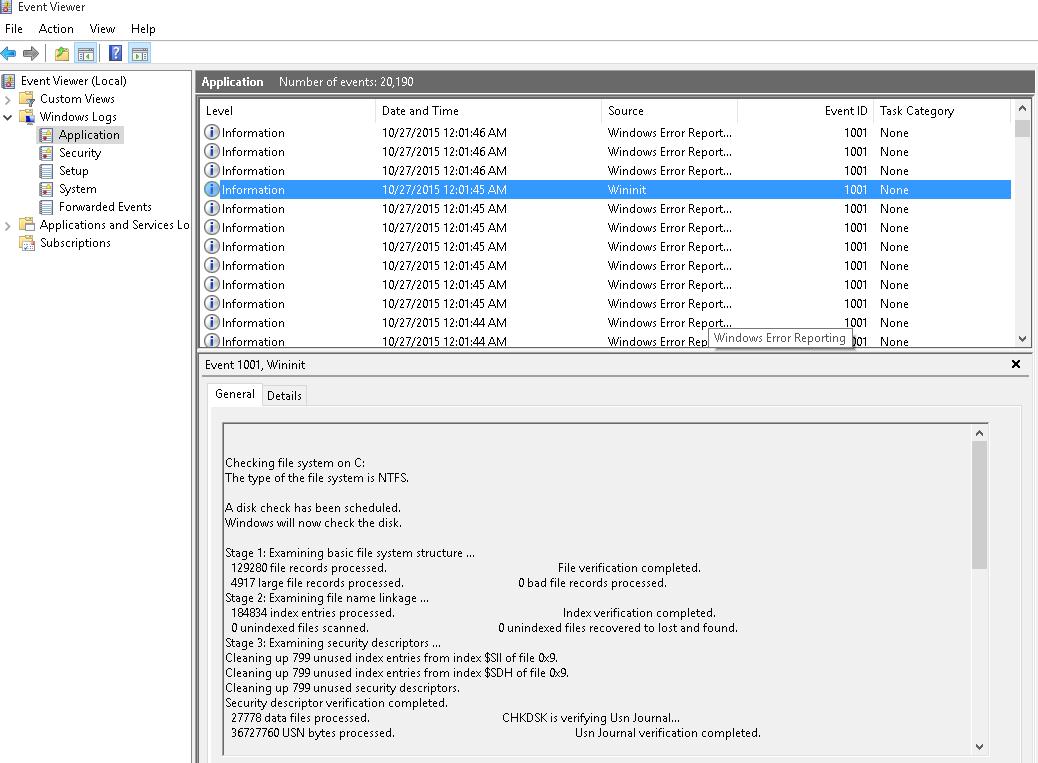
Once you complete the steps, you will be able to review the scan results for the chkdsk command to determine if the tools resolved all the logical errors on the hard drive. Review the chkdsk scan results to determine the fixes to tool was able to perform on Windows 10. In the “Event sources” drop-down menu, select the Wininit option.ĭouble-click the log with the Wininit label as the source. Right-click the “Application” logs and select the Filter Current Log option. Under the “Event Viewer” section, expand the Windows Logs group.

2 In the left pane of Event Viewer, expand open Windows Logs, click/tap on Application, right click or press and hold on Application, and click/tap on Filter Current Log. Search for Event Viewer and click the top result to open the app. 1 Press the Win + R keys to open Run, type eventvwr.msc into Run, and click/tap on OK to open Event Viewer. To check the event logs after running a chkdsk command, use these steps: In this guide, you will learn the step to review the results of a chkdsk command on Windows 10. However, the tool saves the scan results as an application log, which you can review using the Event Viewer. Instead, the computer will reboot immediately after the scan without any messages. The only caveat using the tool is that you won’t get the scan results when running the chkdsk /r c: command.

On Windows 10, the chkdsk (Check Disk) is a legacy command-line tool designed to scan the integrity of the file system to repair logical errors with a traditional mechanical hard drive (HDD) or Solid-State Drive (SSD). The tool also works to fix bad sectors if data did not commit correctly or there is a physical problem with the storage.


 0 kommentar(er)
0 kommentar(er)
